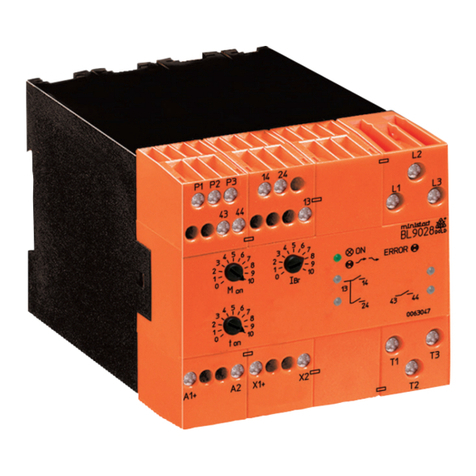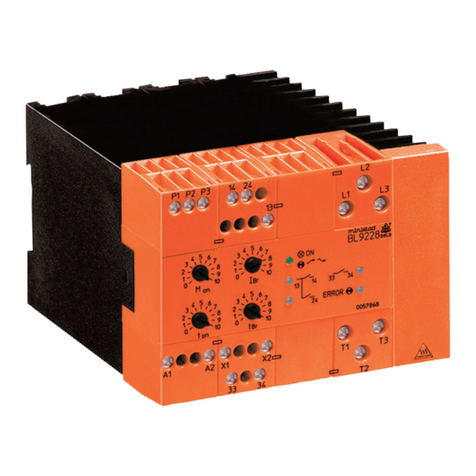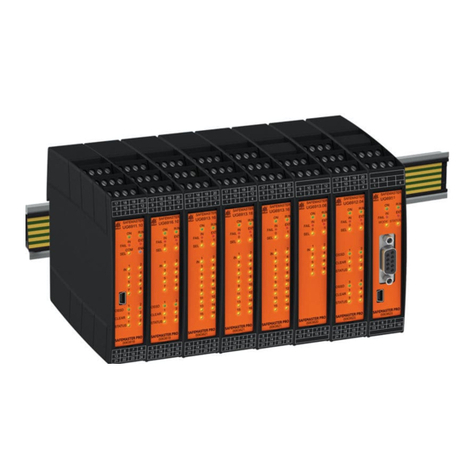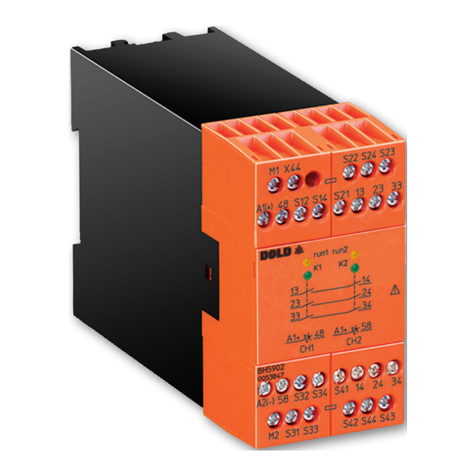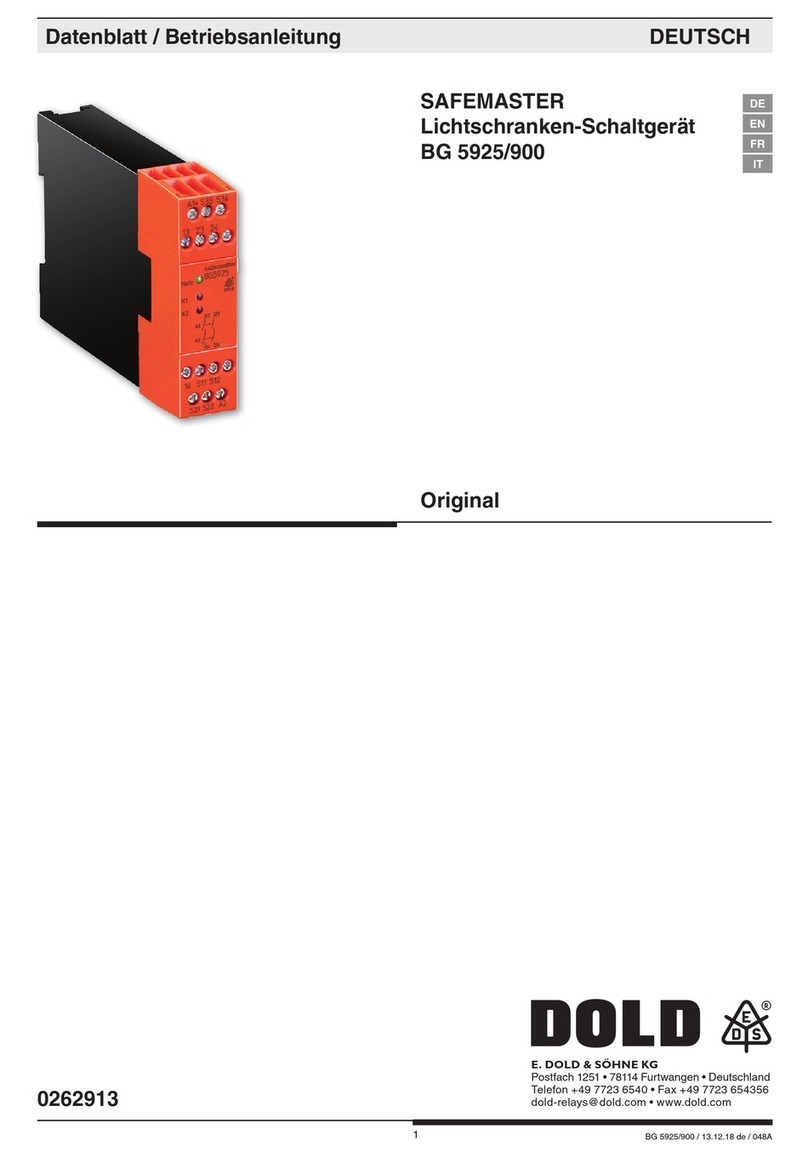
211.01.21 en / 335A
LED green ON = Power connected
LED yellow ON = Power semiconductors bridged
flashes with rising or falling speed at softstart - soft-
stop
flashes with same frequency at error (see table)
LED red: On, when failure detected (only on devices ≥25 kW
Failure codes
Fault LED yellow Operating state
1yellow LED flashes 1 x times
with short space
Supply voltage error or
load too low
2yellow LED flashes 2 x times
with short space
device overloaded /
heat sink temperature to high
3yellow LED flashes 3 x times
with short space failure in electronics
4yellow LED flashes 4 x times
with short space firing error in phase 1
5yellow LED flashes 5 x times
with short space firing error in phase 3
6yellow LED flashes 6 x times
with short space
error in motor phase/ power
semicond. defective in phase 1
7yellow LED flashes 7 x times
with short space
error in motor phase/ power
semicond. defective in phase 3
8yellow LED flashes 8 x times
with short space general synchronising error
Indication
Technical Data
Nominal voltage: 3 AC 400 V ±15 %
(others on request)
Nominal frequency: 50/60 Hz
Rated current: 17 25 32 45 A
Nominal motor power
at PNat 400 V: 7,5 11 15 22 kW
Min. motor power: Approx. 0.2 PN
Start torque: 40 ... 80 %
Ramp time: 0,5 ... 10 s
Deceleration time: 0,25 ... 10 s
Recovery time: 200 ms
Switching frequency: 60 40 30 10 1/h
I2t-Power semiconduct. fuse: 4000 4000 9100 16200
Control inputs
Control voltage
Control input current: 10 ... 24 V DC
1 ... 2.4 mA
Indicator output
Contacts: 1 changeover contact
Switching capacity
to AC 15
NO contact: 3 A / AC 230 V IEC/EN 60947-5-1
NC contact: 1 A / AC 230 V IEC/EN 60947-5-1
Electrical life
to AC 15 at 3 A, AC 230 V: 2 x 105switching cycles
Permissible switching
frequency: Max. 1 800 switching cycles / h
Short circuit strength
max. fuse rating: 4 A gG / gL IEC/EN 60947-5-1
Mechanical life: ≥108switching cycles
Troubleshooting
In case of a fault, please proceed as follows:
Fault 1:
Electronics supply or motor too small (see technical data minimum motor
load). Send device to the producer to have it checked.
Fault 2:
Check the frequency of starts and the starting current and also observe
the max. ambient temperature. Give the device and/or the motor enough
time between starts to cool down. The heat dissipation can be improved
by forced cooling, e.g., by means of a fan mounted unterneath the device
or by using a motor with a separately driven fan.
Fault 3:
Defect in the internal control electronics. Send device to the producer to
have it checked.
Fault 4/5:
Mains supply is interrupted.Motor lead interrupted, power semiconductor(s)
defective, motor defective. Check motor and wiring. Send device to the
producer to have it inspected.
Fault 6/7:
Mains supply is interrupted. Power semiconductors do not trigger. Motor
rating is too small. Check as to whether the motor is suitable for the device
rating. Send device to the producer to have it checked.
Fault 8:
Mains or motor wiring is interrupted. Power semiconductor(s) defective.
Check wiring. Send device to producer to have it inspected
Motor load must always be connected as continuous operation of the
softstart with no load may cause overheating of the motor and softstart.
It is recommended that the softstart is protected by superfast semiconductor
fuses rated as per the current rating of the softstart or motor. However,
standard line and motor protection is acceptable, but for high starting
frequencies motor winding temperature monitoring is recommended.
Resetting of faults
The fault message can be reset by disconnecting and reconnecting the
supply voltage.
Warning:
At any rate, the cause of the fault has to be identified and remedied by
trained and qualified personnel. Only then must the device be put into
operation again.
Notes
Attention:
Please pay attention and consider for the operation of IE3 motors while
dimensioning of softstarters the resulting higher starting currents.
For the use of IE3 motors we highly recommend to dimension and design
the needed softstarters one size higher.

